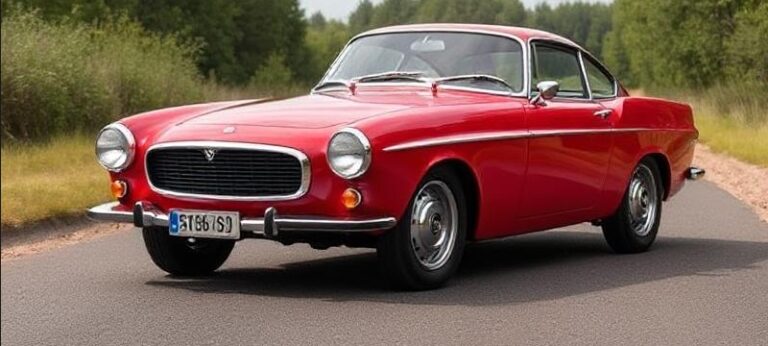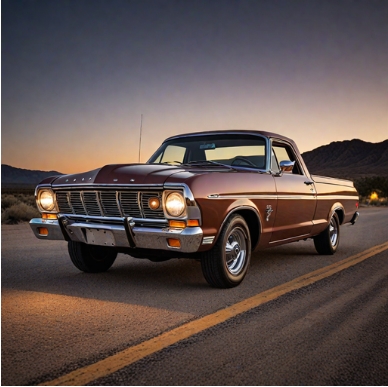The Evolution of the Mercury Monterey: A Historical Overview
Introduction
The Mercury Monterey, a nameplate that signifies elegance and innovation, emerged as significant player in the American automotive landscape during the mid-20th century. Produced by the Mercury division of Ford Motor Company, the Monterey carved out a niche for itself as a stylish and comfortable option for consumers seeking luxury and performance. Over the years, it has seen various iterations, changes in design, and shifts in marketing strategy that reflect both the times and consumer preferences. This article explores the evolution of the Mercury Monterey, detailing its production years, model variations, and trim levels.
1950s: The Birth of the Monterey
The Mercury Monterey was first introduced in 1950 as a full-size car, originally marketed as a premium model within the Mercury lineup. The first generation spanned from 1950 to 1951, highlighting Mercury’s new post-war styling that sought to capture the essence of elegance.
- 1950-1951: The first Montereys were known for their distinctive rear fenders and a bold, chrome-laden front grille. The 1950 model featured entry-level trims like the Monterey and higher-end options like the Monterey Custom, offering differences in upholstery and additional chrome detailing.
The Mid-1950s Transformation
The Monterey underwent a significant redesign in 1952, evolving into a more luxurious offering with the introduction of new features, such as power steering and automatic transmissions.
- 1952-1954: The 1952 Monterey was known for its elongated body and “Monte Carlo” hardtop variant, which enhanced the feeling of opulence. Mercury expanded its lineup in 1954 with the introduction of the Monterey Montclair, establishing a performance tie-in with a sportier trim.
- 1955-1956: These years saw a continuation of the Monterey’s luxe appeal, with a striking redesign and technological advancements. The 1955 model featured exterior styling shaped by the “Flying C” theme, with more pronounced fins and a wider stance. The introduction of trim options like the “M” series catered to performance enthusiasts.
The Golden Era: 1957 to 1960
The late 1950s was a golden age for the Monterey. The 1957 model presented a dramatically altered design, showcasing more aggressive lines and luxurious interiors.
- 1957: The Monterey was expanded into the “Montclair” series, offering consumers more horsepower with engine options such as the V8. The model was marketed as a mid-level luxury sedan, offering affordability without sacrificing comfort.
- 1958-1960: During these years, the Monterey shifted towards a more streamlined design. The 1958 model introduced the “S-55” series, which highlighted Mercury’s prowess in engineering with a 312 cubic inch V8. By 1960, the Monterey would be offered in various trims: the Monterey, Monterey Custom, and Monterey S-55 series.
Decline and Resurgence: The 1960s
As the automotive industry entered the 1960s, competition increased and consumer preferences began to shift towards smaller, more efficient models.
- 1961-1962: The Monterey’s physical presence diminished with a slimmer profile. The 1961 model focused on safety features such as padded dashboards and improved crash protection. The offerings featured the standard Monterey and premium Monterey Custom.
- 1963-1964: Mercury introduced the redesigned Monterey with distinct features like the “squared-off” look. The model had various hardtop and convertible versions, emphasizing style and comfort.
The Final Years: 1965 to 1974
By the mid-1960s, the Monterey faced fierce competition from both domestic and foreign automakers.
- 1965-1968: The Monterey grew once again, but the focus on individualism in the automotive market saw the Monterey evolve into a more conservative vehicle. The 1965 model showcased an available 390 cubic inch V8 engine housing, emphasizing power while maintaining a sophisticated image.
- 1969-1974: The 1969 model introduced an updated design that removed distinct fins, leaning towards refinement. The final versions of the Monterey, particularly the 1971 model, introduced a grander front grille and offered numerous trims, including the Monterey Brougham and Monterey Custom.
.

.
The End of an Era
The Mercury Monterey saw its last production run in 1974, as consumer trends increasingly favored smaller, more fuel-efficient cars due to rising gas prices and changing social norms. The discontinuation of the Mercury brand in 2010 marked the end of the Monterey’s legacy, but it remains a notable symbol of American automotive innovation.
Summary of Model Years and Trim Levels
The Mercury Monterey has undergone several transformations since its inception. Here’s a summary of the years produced and the various trim configurations:
- 1950-1951: Monterey, Monterey Custom
- 1952-1954: Monterey, Monterey Custom, Monterey Montclair
- 1955-1956: Monterey, Monterey Montclair, M Series
- 1957: Monterey, Monterey Custom, Monterey S-55
- 1958-1960: Monterey, Monterey Custom, Monterey Montclair
- 1961-1962: Monterey, Monterey Custom
- 1963-1964: Monterey, Monterey Custom
- 1965-1968: Monterey, Monterey Custom, Monterey Brougham
- 1969-1974: Monterey, Monterey Custom, Monterey Brougham, Monterey S-55
Conclusion
The Mercury Monterey has left an indelible mark on automotive history as a representation of mid-century American elegance, technological advancements, and the shifting landscape of consumer preferences. From its debut in the early 1950s to its decline in the 1970s, the Monterey has adapted and transformed in response to the times, maintaining its place within the pantheon of classic American automobiles. Today, it is celebrated by collectors and enthusiasts who appreciate its unique blend of style, comfort, and historical significance.







